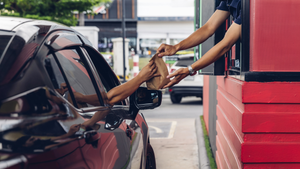Vendors Woo Hispanics
PALM SPRINGS, Calif. — The best way for independents to survive is to strengthen their relationships with vendors and to work together to serve the growing Hispanic consumer base, according to one independent — a request with which several speakers from CPG companies said they were only too willing to comply.
March 7, 2013
PALM SPRINGS, Calif. — The best way for independents to survive is to strengthen their relationships with vendors and to work together to serve the growing Hispanic consumer base, according to one independent — a request with which several speakers from CPG companies said they were only too willing to comply.
“Vendors help us create a partnership with Hispanics, and they are always there to protect the independent,” Mike Provenzano, chief grocery officer of Pro’s Ranch Markets, Ontario, Calif., told the 29th annual Mexican American Grocers Association conference here on Wednesday. With the buying power of Hispanics expected to increase by $500 million over the next two years — to $1.5 trillion, “we need your products to get consumers down every aisle,” Provenzano said.

Kellogg President Brad Davidson
In separate talks, executives from a variety of CPG companies affirmed their support for Hispanic marketing:
• Brad Davidson, president of Kellogg’s North America, Battle Creek, Mich., said winning with Hispanic consumers is “a strategic impetus, and we want to make the shared experience better at the stores. Winning together is not a destination but rather an endless pursuit that requires continual focus and improvement.
“Brands matter to Hispanic shoppers,” he pointed out, noting that 66% of them prefer name-brand breakfast cereals; 55% prefer name-brand cookies and snacks; and 72% prefer buying the same brand on each trip. “Hispanics want to align themselves with brands that strengthen their own identities,” he explained.
Cultural heritage also matters, he pointed out. “Hispanics are inclined to start trusting a brand that genuinely cares and invests in their advancement,” he said. Kellogg’s is also aiming to improve the shopping experience, Davidson said, “because Hispanics regard buying the items family members want as an extension of love and caring for their families.”
• Don Knaus, chairman and chief executive officer of The Clorox Co., Oakland, Calif., said his company creates demand for its products at “three moments of truth” — desire, decision and delight — by creating a need, providing a reason to buy at point-of-sale and offering ultimate product enjoyment. “The well-being of her family is No. 1 for a Latino mom, so providing products that enable her to keep a clean home is important,” he explained.
In addition, because Hispanic consumers are looking for value through multi-packs and larger sizes, “Clorox took some of the club packs we developed and is making them available to independents to help shoppers focus on value,” Knaus said. The company also re-formulated its bleach so that its 64-ounce package does as many washes as its former 96-ounce size, and it promoted that angle “with a lot of focus on radio ads to help the independent grocers,” he said.
Read more: Hispanic Shoppers More Optimistic: Report
• Yolanda Angulo, customer marketing director for Kraft Foods Group, San Ramon, Calif., said CPG’s must adapt to meet increasing Hispanic populations. “It’s critical to have a great foundation of insights into the shopping preferences and habits of different groups of Hispanics from different countries living in different parts of the U.S.,” she explained. “It’s also important to understand the differences and similarities between the Latino population and the general marketplace. We need to simplify how we go to market and proceed on parallel paths. “It’s all about partnering with retailers and working with them across the marketplace in a bilingual manner to help shoppers make decisions in the stores.”
• Mark Rahiya, chief region sales officer for Coca Cola Refreshments, Atlanta, said his company is interested in more than simply selling product. “The focus is on becoming part of people’s lives,” he noted — citing Coke’s “Live Positively” campaign aimed at helping to resolve the challenges of obesity in the U.S. That’s the reason Coke has increased the number of low-calorie and no-calorie beverages to 180 out of 650 beverages and why it prints the calorie count of each item on the outside of the container, he explained.
“In the West sales of no-cal and low-cal products is between 38% and 40% — higher than in most other parts of the country, which is a great sign,” Rahiya said. He said Coke will begin running a Spanish-language version of its “Be OK” television ads — which promote cans of regular Coke, with 140 calories each, as part of a healthy, active lifestyle — beginning in April on Univision.
About the Author
You May Also Like








